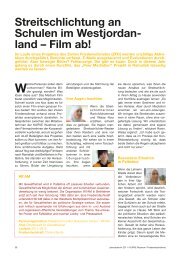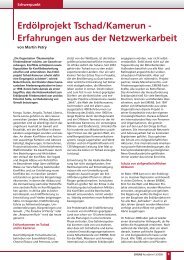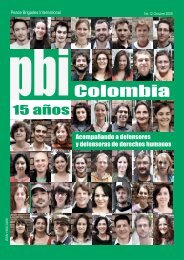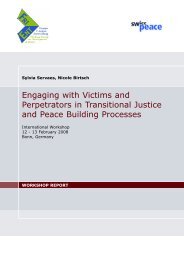Merging Ethiopian Wise-Counsel Mediation and Facilitative ...
Merging Ethiopian Wise-Counsel Mediation and Facilitative ...
Merging Ethiopian Wise-Counsel Mediation and Facilitative ...
- No tags were found...
Create successful ePaper yourself
Turn your PDF publications into a flip-book with our unique Google optimized e-Paper software.
Sample case:victims. Years later, a memorial place is inaugurated with a sculpture made by artists from both sides. The successors of the formercommunity leaders express their remorse in their opening speeches. Elders conduct a public healing ritual. This event leads to animmediate increase in inter-community trade <strong>and</strong> collaboration. Stage 4: Images, CoalitionsAfter apologising to each other, the parties start to view each other as human beings again. But still there’s a lot of mistrust <strong>and</strong>anger because they have inflicted a lot of pain on each other. Whenever there’s a problem or conflict, these feelings surfacequickly. If a child is killed in a traffic accident caused by somebody from the other community, for example, the media will quicklysc<strong>and</strong>alise it <strong>and</strong> demonstrations take place. When conflicts over minor technical issues occur in joint ventures, the thinkingquickly returns to “us against them” <strong>and</strong> people refer to the old stereotypes <strong>and</strong> prejudices.A mediator at this stage must focus on the important issues of the conflict at h<strong>and</strong>, <strong>and</strong> especially with the underlying relationshipproblem. Intra-party work might be even more important than inter-party because there is a high level of peer pressure whichmakes people stick to the rigid position of their group. If the wider public is involved (which is typical for this level of escalation),mediators need not only work with the direct conflict parties, they must engage with the public as well (media, importantstakeholders, etc.).The government <strong>and</strong> CSOs conduct many trainings <strong>and</strong> workshops which encourage people to reflect on their emotions, concerns<strong>and</strong> stereotypes. Reconciliation cannot be enforced top-down; the mediator has to listen, especially to critical persons. If incidentsthat could easily contribute to a re-escalation take place, the administrations <strong>and</strong> CSOs immediately step in with symbolic publicacts which make clear that the leaders are not willing to politicise such events. In the example of the child killed in the trafficaccident, the communities hold an inter-faith funeral service where religious <strong>and</strong> political leaders are present. This event calmsthe public’s outrage.Stage 3: Actions not WordsAt this stage, when conflicts occur between members of the two communities, they are still seen as conflicts over specific problems<strong>and</strong> not between the communities. Still, relationship problems play a role <strong>and</strong> the parties are likely to expect that the other will actunilaterally for their own benefit instead of finding joint agreements. Therefore, mediators need to address the question of howto create a safe environment for mediation, where parties can feel confident that the status quo will not be undermined during theprocess. If a major unilateral act has just happened, it might be necessary to go back to a status quo situation (at least symbolically)before the mediation starts. The facilitative style of mediation applies very well at this stage. The mediator should therefore focuson underlying interests/needs/fears <strong>and</strong> the relationship as well as facilitate change of perspective.Sample case:Trade <strong>and</strong> joint-business projects are common, intermarriage is still rare but increasing. Conflicts are seen as quite normal nomatter between whom they occur. They are mediated from time to time but don’t threaten the communities as such.90 <strong>Mediation</strong> Trainer’s Manual
















